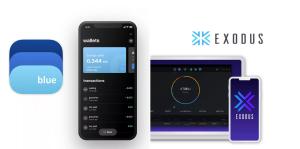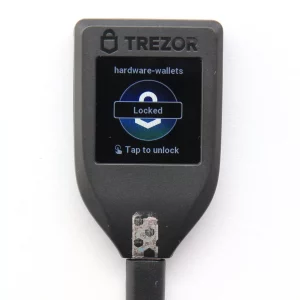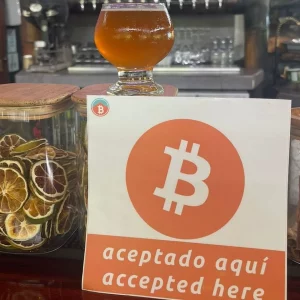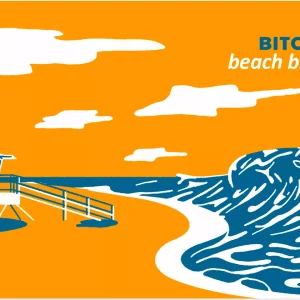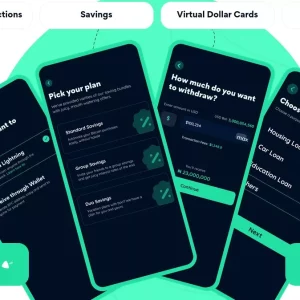One innovation that has gained significant traction in the Bitcoin ecosystem is the Lightning Network. Bitcoin has a well-known drawback: slow transaction speeds. The Lightning Network is designed to handle Bitcoin transactions with faster speed and minimal fees. Within the Lightning Network ecosystem, two prominent methods of conducting transactions have emerged: Native Bitcoin Lightning wallets and wallets using Submarine Swaps. In this article, we look into the differences between these two approaches, exploring their mechanisms, advantages, and potential drawbacks.
Before delving into the intricacies of Native Bitcoin Lightning wallets and Submarine Swaps, it’s essential to grasp the fundamentals of the Lightning Network and the Bitcoin network. The Bitcoin network operates as a decentralized peer-to-peer system for transferring value, relying on a blockchain to record and verify transactions. However, the Bitcoin network faces challenges in scalability and transaction speed, particularly during periods of high demand.
The Lightning Network addresses these issues by enabling off-chain transactions, allowing users to create payment channels directly between parties. These payment channels facilitate near-instantaneous and low-cost transactions, offering a scalable solution to Bitcoin’s inherent limitations.
Find out more: Bitcoin Network vs Lightning Network
How Lightning Network Transactions Work
Lightning Network transactions operate through a network of interconnected payment channels. To initiate a Lightning transaction, users first establish a payment channel by committing a certain amount of Bitcoin to a multi-signature address. Once the channel is established, users can conduct an unlimited number of transactions off-chain, updating the channel’s balance accordingly. Finally, when either party wishes to settle the transaction on the Bitcoin blockchain, they close the payment channel, broadcasting the final balance to the network.
What is a Native Lightning Wallet?
A Native Lightning Wallet is a Bitcoin wallet specifically designed to interact with the Lightning Network by empowering you to create and manage payment channels, send and receive Lightning payments, and monitor your Lightning Network activity directly from your wallet. While some users may opt to manage their own liquidity by connecting to their own node, this can be challenging for beginners. To address this, some wallets integrate third-party Liquidity Service Providers. These providers enable users to receive Lightning payments without the complexity of opening channels or managing liquidity. This integration allows new users to receive their first Lightning payment within seconds of opening their wallet.
There are several popular native Lightning wallets that allow you to directly interact with the Lightning Network. They include Phoenix, Zeus, Breez, and Alby (browser extension).
Pros of Native Lightning Wallets
- Lower fees: Transactions primarily occur off-chain, incurring minimal fees.
- Privacy: Transactions within channels are not publicly broadcast.
- Flexibility: You have complete control over your channels and routing.
Cons of Native Lightning Wallets
- Complexity: Managing channels can be a learning curve for beginners.
- Liquidity Management: Ensuring enough funds are readily available in your channels for outgoing transactions can be challenging.
- Limitations: Limited compatibility with certain platforms and services.
- Confusing Balance: The Separate balance between your funds locked up in Lightning channels and funds available for on-chain spending offered by some Lightning wallets can be confusing.
What is a Submarine Swap?
Submarine Swaps are a mechanism for exchanging on-chain Bitcoin for off-chain Lightning Network funds and vice versa. Unlike Native Lightning wallets, which require users to fund their Lightning channels directly, Bitcoin wallets using Submarine Swaps enable users to convert Bitcoin to Lightning funds seamlessly, without the need for prior setup, channel management, or node management.
How Wallets Using Submarine Swaps Work
Wallets using Submarine Swaps facilitate trust-minimized atomic swaps between on-chain and off-chain Bitcoins to enable instantaneous exchanges. The process begins with the wallet initiating the swap by creating a special transaction on the blockchain containing a Hashed Time Locked Contract (HTLC), which holds the on-chain bitcoins and sets a time limit for claiming them. This HTLC transaction is then broadcasted but not confirmed yet, becoming visible to the counterparty, typically a service provider on the Lightning Network (LN).
Subsequently, the counterparty on the LN network creates a mirror HTLC with matching value and time limit and sends a payment through the Lightning Network to the wallet. If the wallet receives the LN payment within the specified time limit, it can use a secret key to unlock the on-chain HTLC and claim the Bitcoins. However, if the LN payment isn’t received within the time limit, the on-chain HTLC automatically expires, and the Bitcoins are returned to the wallet’s address.
This process ensures both parties are safeguarded, as the wallet never sends the on-chain bitcoins until it receives the LN payment, and the counterparty only pays the LN invoice if they can claim the on-chain Bitcoins within the timeframe.
Several wallets leverage Submarine Swaps to streamline Lightning transactions. Wallets like Muun and Aqua are exclusively dedicated to Submarine Swaps, whereas others provide a dual functionality: enabling Submarine Swaps alongside user-managed channel control. Take Breez, for instance; it utilizes Boltz for Submarine Swaps but also empowers users to connect to their nodes, managing channels independently without relying solely on swaps.
Pros of Submarine Swaps
- Simplicity: No need to manage Lightning channels yourself, ideal for beginners.
- Security: Smart contracts ensure secure transactions.
- Simplicity: Simplified onboarding process for Lightning Network newcomers, and there’s no need to maintain separate Lightning channels.
- Flexibility: Enhanced flexibility for converting between Bitcoin and Lightning funds.
Cons of Submarine Swaps
Lightning Network is designed as a second-layer solution for faster and cheaper Bitcoin transactions by enabling off-chain transactions. While Submarine Swaps can provide interoperability between on-chain and off-chain Bitcoin, they do involve on-chain transactions, potentially contributing to blockchain congestion, which goes against the primary goal of Lightning Network to alleviate congestion on the main Bitcoin blockchain. So, Lightning purists might argue that Bitcoin Submarine Swaps contradict the intended purpose of Lightning Network.
Other disadvantages of Submarine Swaps are the following:
- Higher Fees: On-chain transactions and swap fees can add up.
- Slower Speeds: Confirmation times might be longer due to on-chain reliance.
- Less Control: You have limited control over routing, timing, and liquidity and reliance on third-party services for swap execution.
Should You Use Native Lightning Wallets or Submarine Swaps, or Both?
The decision between utilizing Native Lightning wallets, Submarine Swaps, or a combination of both hinges on your needs and level of experience. Native Lightning wallets grant you greater autonomy and privacy, appealing to those who prioritize self-custody and security. Conversely, Submarine Swaps facilitate a seamless exchange between Bitcoin held on-chain and Bitcoin on the Lightning network for newcomers seeking convenience.
Nevertheless, it’s essential to acknowledge that the primary concept behind the Lightning Network is to minimize on-chain transactions. Despite the convenience of Submarine Swaps, the complexity of channel management and liquidity issues can deter novice users. Additionally, the fees associated with Lightning payments via Submarine Swaps may render them impractical for daily transactions. Submarine Swaps do involve on-chain transactions, potentially contributing to blockchain congestion, which goes against the primary goal of Lightning Network to alleviate congestion on the main Bitcoin blockchain.
Bitcoin submarine swaps prove valuable for individuals who lack a dedicated native Lightning network wallet, struggle with setting up their own node or managing channels, and are willing to incur higher fees for lightning payments. However, it’s important to note that Submarine Swaps do not inherently enhance privacy beyond what is already available within the Lightning Network and Bitcoin blockchain. To bolster privacy within the Lightning network, users can leverage features such as CoinJoin, PayJoin, and routing transactions via Tor.
Native Lightning wallets grant users greater autonomy and privacy, appealing to those who prioritize self-custody and security. They also offer what Lightning Network innovation was made for: fast and cheaper transactions. Additionally, native Lightning wallets provide flexibility by allowing users to have complete control over their channels, timing, and routing.
Ultimately, regardless of the chosen method, the Lightning Network continues to evolve, offering innovative solutions to address scalability and usability challenges within the cryptocurrency landscape.






